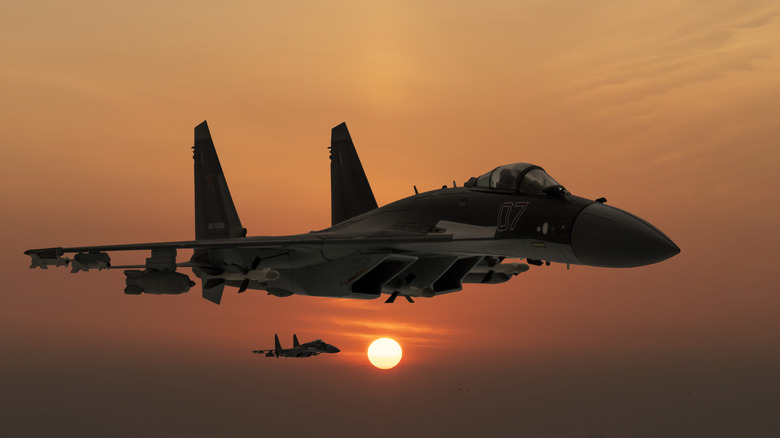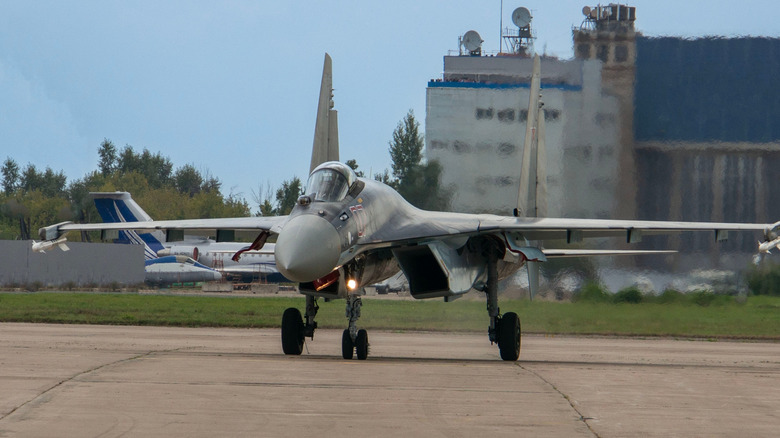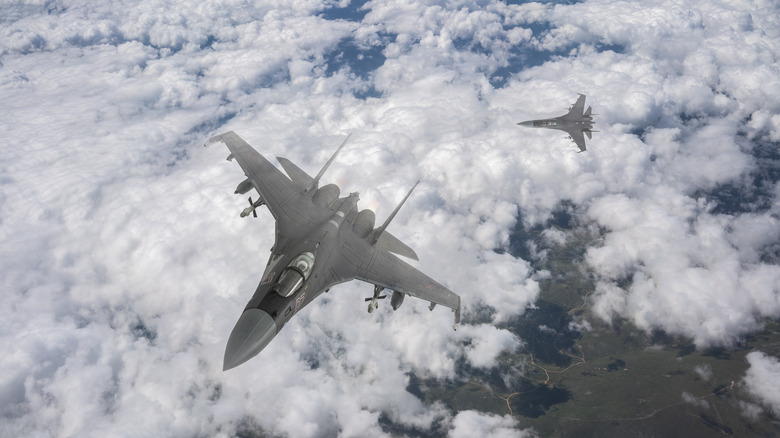How Many Su-35 Jets Does Russia Have?
Russia's status as a global air power is underscored by an impressive military aircraft inventory that includes hundreds of unmanned aerial vehicles, bombers, and, of course, fighter jets. The vast fleet is a testament to the nation's commitment to maintaining a formidable presence in the skies in the face of evolving international power dynamics and advancements in aerial warfare.
Central to Russia's modern air arsenal is the Sukhoi Su-35, a highly advanced fighter jet second only to the Su-57 in the lineup. The single-seat Su-35, designated "Flanker-E" by NATO, is a multirole fighter jet known for its exceptional maneuverability. It is described as a 4++ generation fighter rather than a fifth-generation fighter jet, primarily because it lacks the full suite of stealth features typically found in fifth-generation aircraft like the Su-57 or F-22. However, the Su-35 still packs enough cutting-edge technologies and advanced electronics to make it a formidable threat in the sky.
Precise figures are closely guarded, but the World Directory of Modern Military Aircraft estimates Russia currently operates about 114 Su-35 fighter jets. This report is corroborated by other online media sites like the Kyiv Independent. The Su-35 fighter jet is produced by Sukhoi, Russia's second most important manufacturer of military aircraft, after the design bureau MiG. The first Su-35 prototype had its maiden flight in June 1988. Initially designed for export, Russia would ultimately become the first launch customer of the Su-35, with the production version, known as the Su-35s, entering service in 2014, after several years of constant refinements.
The Sukhoi Su-35 is an alpha aerial warfare platform.
The Sukhoi Su-35 is a heavily upgraded version of the Su-27, and at first glance, both aircraft share many external similarities. However, beneath the Su-35's skin lies a completely reworked airframe structure, updated avionics, and an advanced electronics package. The aircraft is currently powered by a pair of Saturn AL-41 thrust vectoring engines. This powerplant, combined with the aircraft's flight surfaces and a sophisticated fly-by-wire system, is responsible for the aircraft's extreme maneuverability. Beyond its agility, the Su-35 is also supersonic, reaching top speeds of Mach 2.25.
Designed to be mission-flexible, the Su-35 can be tasked with air-superiority missions, ground strikes, and even anti-ship warfare. It can carry up to 12 short-range missiles, four more than the F-22 Raptor. The Su-35's advanced radar systems allow it to track up to thirty targets simultaneously while engaging eight at the same time. The aircraft also packs a 30 mm Gryazev-Shipunov GSh-301 autocannon for close-in combat and dogfights.
A battle-hardened veteran
The first combat use of the Su-35 was in 2016, during Russia's military intervention in Syria. Russia initially deployed a flight of 4 aircraft to the Middle Eastern country, where they primarily engaged ground targets. However, Military Watch magazine also reported that Su-35s intercepted Israeli aircraft over Syrian airspace on multiple occasions, preventing them from carrying out air strikes.
The Su-35 fighter jet has faced a significantly sterner challenge in the skies above Ukraine during Russia's ongoing conflict with the country. The aircraft has had to go up against Western-supplied air defenses like the infamous Patriot missile batteries. Oryx, an online site that tracks Russian equipment losses due to the war in Ukraine, reports that up to 8 Su-35 fighter jets have been destroyed in combat. The last Su-35 was reportedly shot down by a Ukrainian F-16 Fighting Falcon, supported by a Swedish reconnaissance aircraft.
Despite these challenges in Ukraine, the Su-35 remains an aerial force to be reckoned with. It is reasonable to assume the combat losses could have been far greater had the Su-35 not been an exceptionally capable combat aircraft with impressive maneuverability, advanced avionics, and formidable weapon systems.


